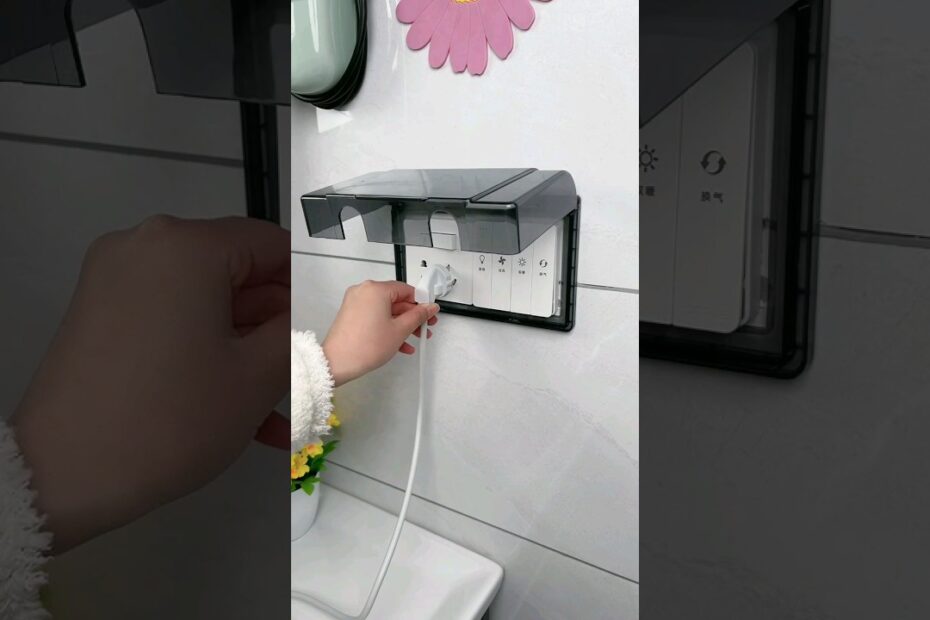Why a Waterproof Plug Cover is Essential for Outdoor Electrical Safety
Imagine your outdoor outlet is a middle-aged dad at a pool party. Without a waterproof plug cover, it’s basically him cannonballing into the deep end with a toaster. Chaos. Electrified chaos. Rain, sprinklers, or that one neighbor who “accidentally” hoses down your patio become instant villains in this shocking rom-com. A waterproof plug cover? That’s the hero cape your outlet needs to avoid becoming a crispy plot twist.
Because Nature Loves Drama (and Short Circuits)
Mother Nature isn’t just “moody”—she’s a full-blown prankster with a PhD in mischief. A sudden downpour? She’s giggling as your uncovered outlet becomes a miniature Tesla coil. But slap on a waterproof cover, and suddenly you’ve turned her water balloons into harmless confetti. These covers are like bouncers for H2O, saying “Not tonight, buddy” to rain, snow, and rogue lawn gnomes wielding Super Soakers.
Here’s why your outlet deserves this tiny umbrella:
- Stops sparks from cosplaying fireworks (your insurance company will thank you).
- Blocks bugs who think your outlet is a cozy Airbnb (no, spiders, this isn’t a 5-star cave).
- Prevents your DIY backyard concert from becoming a literal shock rock performance.
When “Oops” Meets “Zap”
Let’s face it: outdoor outlets are magnets for “hold my lemonade” decisions. Forgot the cover? Congrats, your string lights now double as rave gear for hyperactive squirrels. Waterproof plug covers are the unsung guardians of “I didn’t think that through” moments—like when your inflatable unicorn pool float collides with an extension cord. Without one, you’re not just risking a tripped breaker; you’re auditioning for a Darwin Award. With one? You’re just a person who almost set the patio on fire. Progress!
How to Choose the Best Waterproof Plug Cover for Your Home or Business
Step 1: Embrace Your Inner Sherlock (But for Outlets)
First, investigate your outlet’s *drama*. Is it outdoors, lurking near a sprinkler with a vendetta? Or is it indoors, pretending to be safe until someone spills kombucha like it’s Niagara Falls? Location matters. A cover meant for your serene bathroom might not survive a monsoon-themed patio party. Look for IP ratings—like IP65 or IP67—which basically translate to “how much chaos can this thing endure before crying?”
Step 2: The Great Material Debate: Silicone vs. Plastic vs. Unicorn Tears
Not all waterproof plug covers are created equal. Some are flimsier than a politician’s promise, while others could double as a bunker. Consider:
- Silicone: Flexible, squishy, and perfect for outlets that double as modern art installations.
- Hard Plastic: Rigid, no-nonsense, and ideal for areas where toddlers practice their “unplug everything” philosophy.
- “Weatherproof” vs. “Waterproof”: One shrugs at mist, the other laughs at tidal waves. Read the fine print, or regret it during the next flash flood.
Step 3: Installation: Because Duct Tape Isn’t the Answer
If your DIY skills peak at “assembling IKEA furniture while weeping,” opt for screw-on covers. They’re sturdier than flip-style lids, which tend to pop open like overcaffeinated jack-in-the-boxes. For outlets you actually use, pick a cover with a hinged design—so you’re not unscrewing things every time you need to charge your llama-shaped lamp.
Step 4: Aesthetic Warfare (Yes, Really)
Your plug cover shouldn’t scream “I gave up on life.” Match it to your decor! White blends in like a ninja, neon yellow screams “I’M HERE,” and metallic finishes pretend they’re part of a spaceship. Pro tip: If your outlet’s near a pool, skip the “rustic chic” look. Corrosion is not a vibe.
